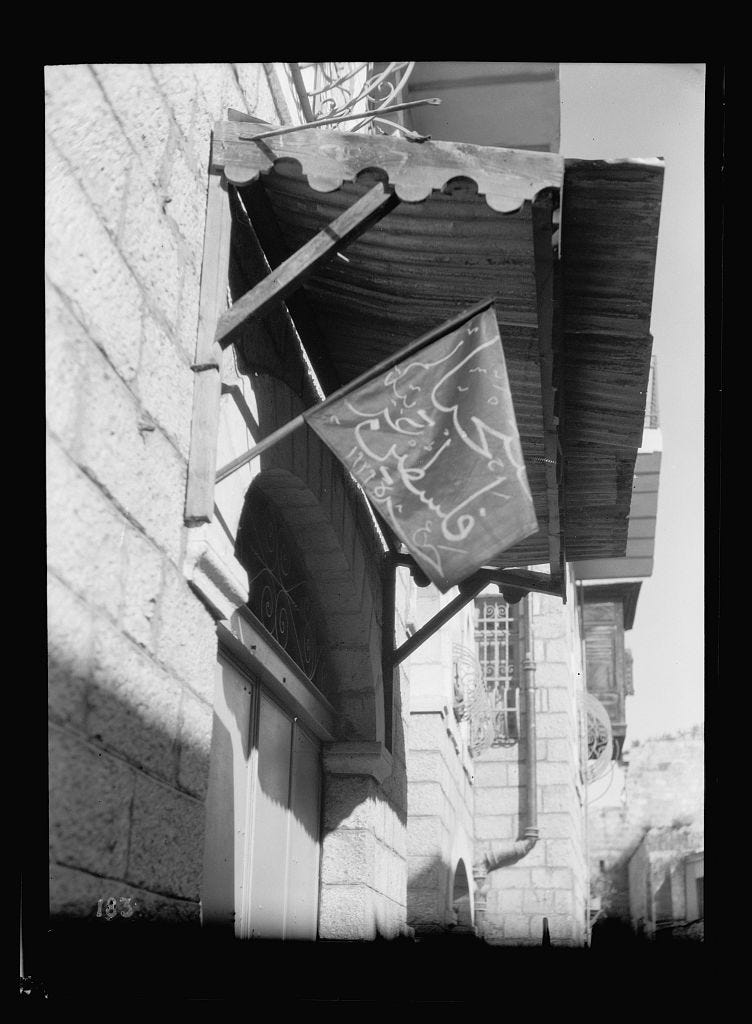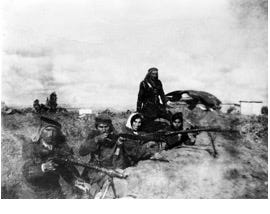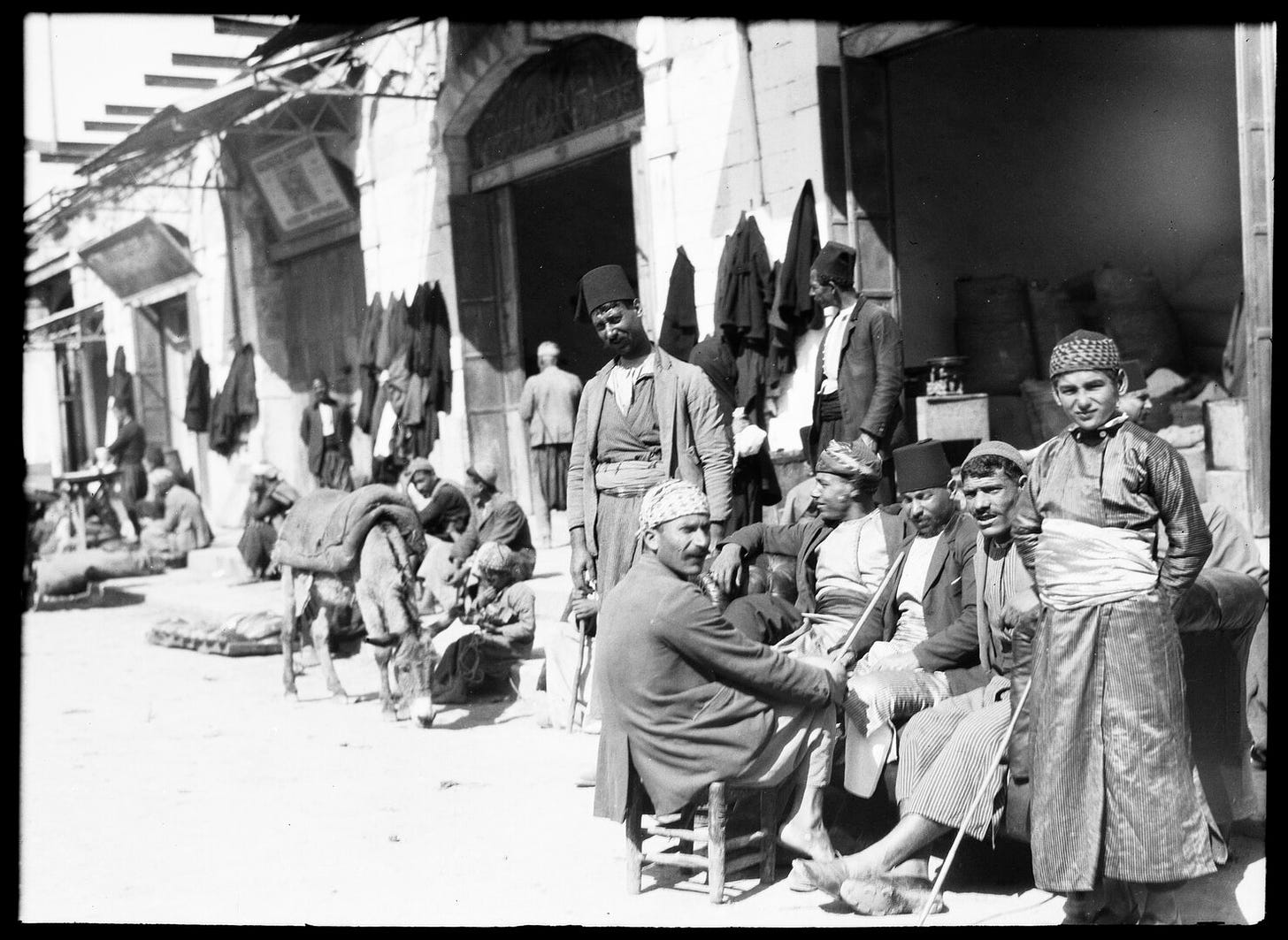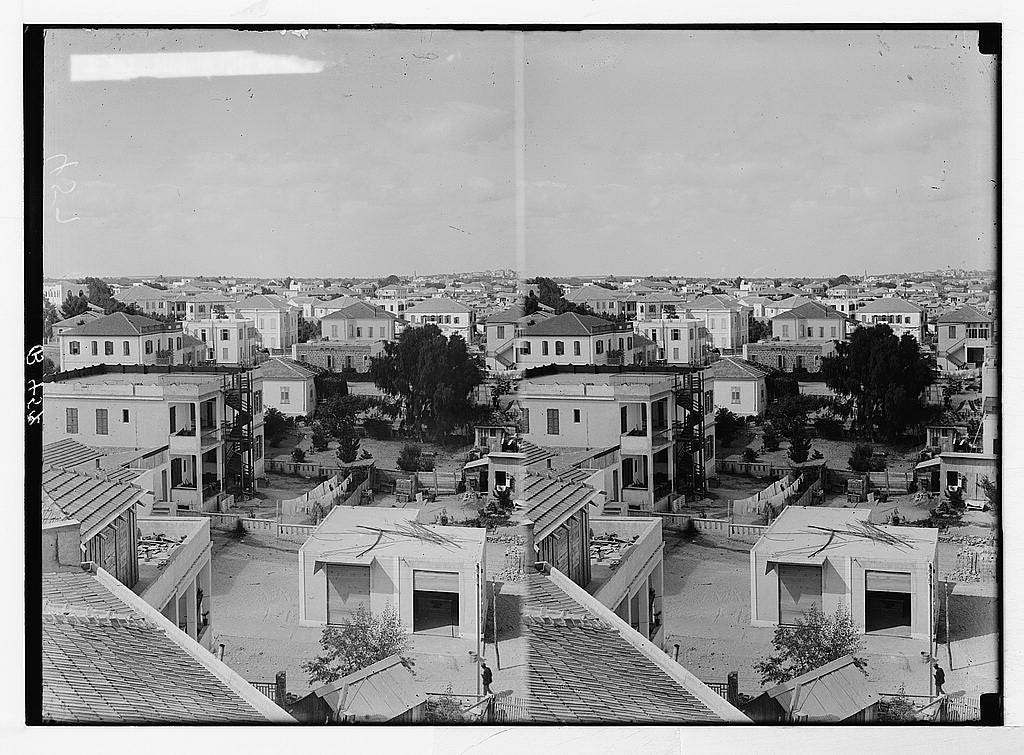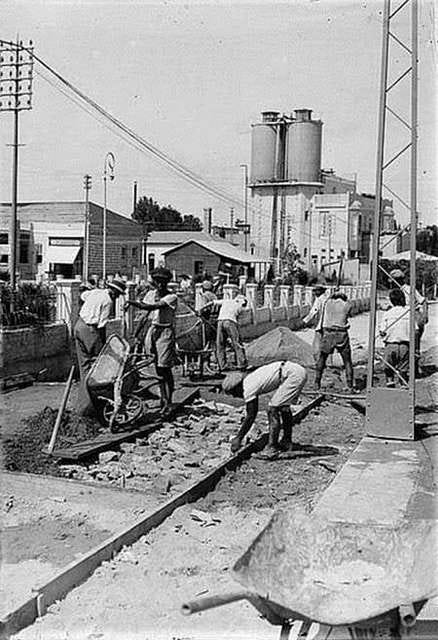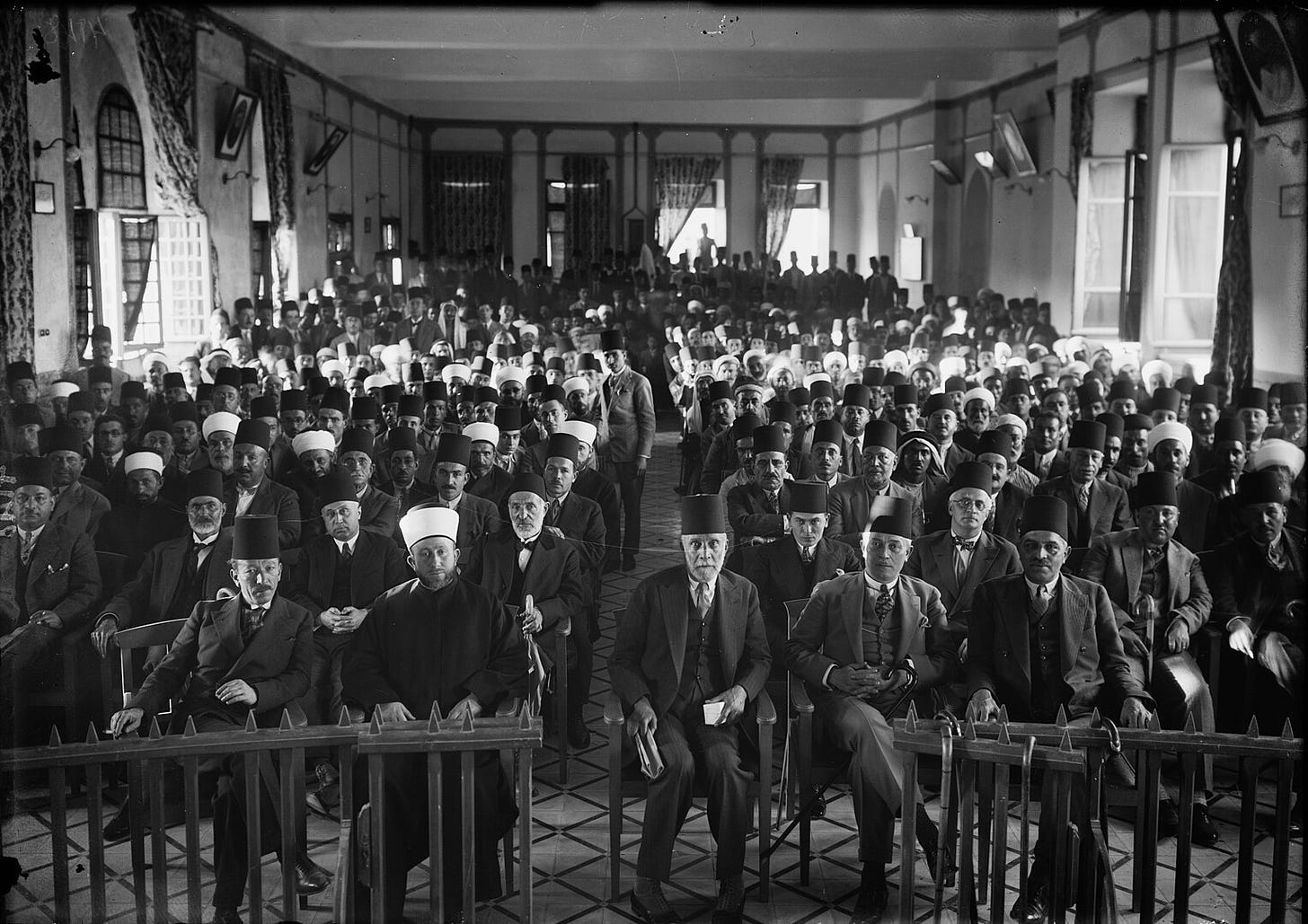by Fanny Elisabeth Wooden Garvey
On June 3, 1924, people who read the San Diego newspapers would have been informed that “the Near East is the Danger Zone of the World.” Given the seemingly eerie and coincidental similarity of this declaration to the 2024 American media’s assertion that as of August 1, 2024, “this is such a chaotic, dangerous time in the Middle East” and “this is about as dangerous as its gets for the Middle East,” I decided to explore San Diego news articles from 1924 about this perception of the region, known then as the Near East and now as the Middle East, and loosely defined as the Arab world, the Muslim world, or, more broadly, the geographical regions that include Palestine, Syria, Lebanon, Jordan, the Gulf Arab states, Egypt and northern Africa, Turkey, and Iran. What, I wondered, would cause media sources to declare this part of the world so dangerous 100 years ago and today? Let me tell you what I discovered…
In 1924, the San Diego Union, San Diego Tribune and San Diego Bee published 191 articles containing the word “Palestine,” 129 articles containing the keyword “Arab,” 145 articles containing the keyword “Moslem” (misspelling of the word Muslim), and 123 articles containing the keyword “Zionist,” as well as nearly 100 articles containing the keywords “British,” “rule,” “mandate,” and “opposition.” Importantly, 1924 was a year in which there was growing opposition to European intervention in what was then called the Near East, originating in the dismantling of the Turkish Ottoman caliphate’s political and economic governance of the region. This activity began in April 1920, when the European Treaty of Versailles “mandated” Syria and Lebanon to be governed by France and Iraq and Palestine to be governed by England. By July 1920 Arabs in Iraq began rebelling against these arrangements and opposition to them increased after a July 1922 League of Nations statute that “mandated” England to establish a national home for Jews in Palestine. Although Jewish people had lived in Palestine since the 2nd century BCE, the “mandate” was based upon the 19th century Zionist assertion that the region was what a December 1924 San Diego Union article declared to be “the homeland that has been kept from the Jews for 2000 years.”
Throughout 1924, San Diego media promoted this idea, along with another assertion that Palestine “is the cradle of Christian religion.” Within this context, the Near East was considered to be “the Danger Zone of the World” in a June 1924 article, due to “the clash between the rigid, medieval civilization of Islam with the intensely nationalistic modern civilization.” Other articles asserted that “centuries of Turkish misrule” as well “the Moslem practice of beheading children” meant that the Near East region was a place where a “dead empire” (Ottoman) could only be made into a modern, civilized place with European and American intervention, by means of creating “a system of orderly contribution.” In Palestine, the method of doing this was to send Zionists to live there, and in San Diego, this proposal received enthusiastic political and financial support.
However, other reasons were also given for justifying European and American intervention in the region. For example, in the article that declared the Near East to be the Danger Zone of the World, the anonymous writer is alarmed “that more Moslems visited Paris last year than visited Mecca.” To further demonstrate the cause of this alarm, the writer goes on to assert that “There is a great influx of these people, and I find there are literally thousands of Mohammedan students now entering colleges and universities of western and southern Europe.”
However, in order to not panic the reader, the same writer assures them that, while this may be a shocking new development, it is all for the best, because “there are unmistakable proofs of the break-up of the most powerful system that probably the world has ever known — the social, religious, political system known as Islam.” Thus, despite the Near East being the Danger Zone of the World, “industrialism is crowding out medievalism, everywhere tradition is being overturned, thousands of miles of splendid highways are being built for automobiles, and the most remarkable revulsion that the world has known in a thousand years in any part of the world is now taking place in the Near East, because the abolition of the caliphate (Ottoman) has dealt a body blow to pan-Islam.”
Overall, the writer concluded that the mandates in the region may make it the Danger Zone of the World, but, this was, ultimately, a good thing, because Islamic political and economic unity would be destroyed. Yet, 100 years later, the same fear of the region exists, despite another San Diego Union writer opining in 1924 that “the Moslem world is turning to western customs and imitating them and citing them as the ideal to be attained.” Therefore, it is worth wondering about the June 1924 assertion in the San Diego Union to support the European and American project “to substitute orderly contribution in order to realize the promise of a future economic development” in the region has failed, and with it, Western dreams of having and maintaining political and economic control of what is now known as the Middle East.
Despite San Diego media writers being enthusiastic about the British mandate of Palestine being a hope for future European and American control of the region, there had already been indications earlier in the decade that this project might not easily achieve its aims. For example, in 1921, the residents of Jaffa had become concerned by rising numbers of Zionist immigrant ships that were arriving in its harbor, unloading more than 20,000 in that year alone. On May 1st of that year, three different Zionist political organizations planned to march and speak in Jaffa about their future plans for the city and this led to them clashing in the Manshiya district of the city, which had been home to both indigenous Jews and Arabs for more than 1,000 years. In the ensuing confrontation between the three Zionist groups, both indigenous Jews and Arabs were brutalized and the British military assigned to Jaffa to maintain the mandate began firing and killed several people from both groups, as well as Zionists who were attempting to shelter in an immigrant hostel.
In response to the death of their people, Zionists organized vigilante brigades that assaulted indigenous Arabs in Jaffa and also spread to other villages, including Kfar Saba, Rehovot and Hadera. This led to Bedouin Arabs organizing counter-brigades and in the course of a week, an estimated 100 Arabs and Jews were dead, and hundreds more wounded. In the midst of this violence was the British military, who also killed and wounded indigenous Arab civilians. Thus began a 100-year history of confrontation between Palestinian Arabs and Zionist settlers that has made the project of European and American support for controlling the region more difficult than had been planned. However, San Diego media writers were not discouraged by the beginnings of indigenous Arab resistance to Zionist settlement and continued throughout 1924 to sing the praises of the Palestinian mandate.
One topic that was particularly favored by the San Diego media was to report on the progress being made to industrialize Palestine. Reporting in February 1924 about University of California professor Elwood Mead’s tour of the region, the San Diego Union and San Diego Daily Bee informed its readers that under the British mandate, Palestine had become “the scene of all manner of news enterprises because the Zionist movement has sent millions in money and thousands of settlers.” Importantly, according to Elwood, the British government was providing military support “to protect against Bedouin robbers.” This, along with British financial support, was allowing the Zionists to “create two important new railroads, drain the marshes, develop water power from the River Jordan and construct handsome homes.”
In that same month, San Diego media reported that the San Diego branch of the World Zionist Organization had chosen officers for the ensuing year and that “their friends are looking forward with pleasurable anticipation to the elaborate Purim ball that will be held on March 23rd at the K of Pythias Hall at 3rd & E Streets.” (The Knights of Pythias were a structured whites-only secret society formed in Washington DC in 1864 that has been described on one Jewish genealogy website as “the most popular fraternal order for Jewish men in the United States”). By April 1924, an anonymous writer in the San Diego Union reported that “85 Jewish agricultural colonies have been successfully established in Palestine, consisting of modern suburbs, new businesses quarters, hundreds of houses, 17 hospitals, clinics, and laboratories, a complete system of Hebrew education and the erection of the first buildings for Hebrew University.” Additionally, the city of Tel-Aviv, with a population of 20,000, was “thriving on the former barren sand wastes of Jaffa.”
The Zionist activity in Palestine was so intensive that in May 1924 the San Diego Tribune reported that Jacob Fishman, managing editor of the New York Jewish Morning Journal had informed the press that the British High Commissioner had “issued certificates for the importation of more than 2000 workers from former plantations in the British Empire, due to a labor shortage in Palestine.” Importantly, these workers were to be put to work on tobacco plantations in Palestine that had been “developed rapidly following the abolition of the Turkish tobacco monopoly as well as in “the orange groves of Jaffa” that had “yielded the best crop in history” and on the many “road and infrastructure projects” being pursued by the Zionists. It is interesting to note that no mention was made of the role played, if any at all, by indigenous Arab and Jewish residents of Jaffa and its surrounds in the Zionist colonizing project.
Although in June 1924, the San Diego Union reprinted an articles written by Lord Raglan of England, published in the London Sunday Express, in which the writer laments that fact that during the First World War, “the British government promised to give Palestine, which was not theirs to give, to both King Hussein of Mecca and Dr. Weizmann, the Zionist leader, neither of whom had the faintest claim to it.” Not only does Lord Raglan express concerns about the need for King Hussein and Dr. Weitzman to “embrace” in order to resolve this dilemma, he also asserts that “the latter [the Zionist] have put forward a scheme by which both parties would benefit at the expense of the unfortunate Palestinians.” Furthermore, he opined that “the Zionist program in Palestine has filled the minds of the peasants with an apprehension which nothing that the government can say or do will remove.” This, he believed, was creating “two classes in Palestine — Zionists and Arabs, both intolerant and fanatical, with the great majority of the original inhabitants saying, ‘We were better off under the Turks.’” Due to these circumstances, Lord Raglan concludes that the British “have not a friend in the Middle East”because their government’s actions have led to circumstances in which “the interests of the people in that region have been sacrificed.”
Yet, dour British reasoning about Palestine did not seem to dampen the enthusiasm for the Zionist project there. In July 1924, the San Diego media published several articles commemorating “the 75th anniversary of the birth of Max Nordau, author, philosopher and one of the founders of the Zionist movement,” as well as “the 20th anniversary of the death Dr. Theodore Herzi, the founder of the Zionist movement.” Additionally, one writer informed readers that Zionist progress in Palestine was “so successful that an American has gone over to start an insurance company and every effort is being made to attract tourists from the United States, and it is anticipated that they will bring five million dollars into the country this summer.”
Due no doubt to the predilection of San Diego media emphasis on summertime fun in the sun, no further articles about the Zionist movement were published until October 1924, when a lengthy article about the celebration of Yom Kippur noted that “a keynote speaker at a meeting at a local synagogue would be Paul H Goldman, an organizer of the student body Zionist societies.” Finally, in December 1924, articles were published about a “Chanukah dance to be held at the Knights of Pythias Hall, the proceeds of which would go to Zionist causes, including providing funds for local residents who wanted to purchase farm land in Palestine,” and “the visit of an English lecturer and writer, who was prevailed upon by local Zionist organizations to visit San Diego.” By the end of 1924, the San Diego media’s reporting on the Zionist project in Palestine was so upbeat that advertisements were placed in its pages for an ocean-going cruise to the region. Overall, the San Diego media ended its year of reporting about Palestine in 1924 on a cheerful, upbeat note that reinforced the notion that the Zionist project in the region was the best possible outcome of the British mandate.
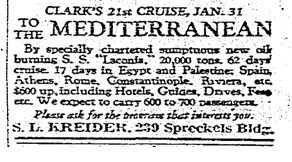
The San Diego media did not provide any details about the cruise ship vacation that was advertised in its pages from July 1924 through December 1924, and it would not be until 1929 that it reported, with the alarm of what seemed short-sighted, of “riots” in Palestine, when Zionist groups organized demonstrations at the West Wall of the Al-Aqsa mosque and clashed with Muslims who were gathered there for prayers. This resulted in 113 Zionists and 116 Muslims killed after British military forces attempted to drive the Muslim worshippers from the site.
However, had local media writers paid closer attention to a dispatch from London in May 1924 that was reprinted in the San Diego Union, they might have better understood Lord Raglan’s ominous article of June of that same year. In a May 1924 two-sentence article, the Daily Express in England reported that “three policemen were killed and two wounded in a battle with Bedouins in the Beersheba district of Jerusalem.” Later that same year, in October 1924, another dispatch from the Daily Express asserted that “Arab women go to war with their men but neither may they be slain except by accident.” Nor did the assertion by one of their own writers in June 1924 that Palestine was part of the Danger Zone to the World seem to dissuade them from supporting the Zionist project there.
In this piece, I set out to discover why this perception existed in 1924 and why it persists today in 2024, and I can only conclude that Lord Raglan was on to something when he declared “the interests of the people of that region have been sacrificed.” And, now, 100 years later, current events in Palestine show us just how devastating that sacrifice has become for the people of that region.
Fanny Elisabeth Wooden Garvey was adopted into a family of “San Diego Black Pioneers” and grew up in an unincorporated part of the city during the 1950s and 1960s. Her first published work was a poem written in kindergarten that was selected for the San Diego Unified School District’s Quest magazine where student writing was featured from the early 1960s to the late 1970s. She has also worked with various creative collectives in the United States, Ireland, and England as well as published works in magazines and anthologies and written scripts for plays and other performative works since the 1970s.



